In This Issue
- Broadband Definition
- Big Data & Super Bowl
- FTC’s Report on IoT
- Report from the CEO
- Gartner IoT Forecast
- Telefonica US Network
- Human Impact of IIoT&
- IoT Transforms 2015
- BitTorrent Crowd Host
- IoT Market to $103B
- Will Change Your Life
- 1-in-5 Developers IoT
- ARM CEO Sets Sights
- Google Chm: Net Gone
- Samsung’s IoT Bet
- Big Data and the IoT
- Coming DCIA Events
The FCC Has Changed the Definition of Broadband
Excerpted from The Verge Report by Micah Singleton
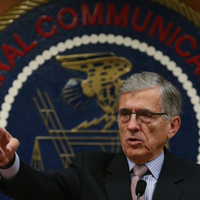 As part of its 2015 Broadband Progress Report, the Federal Communications Commission (FCC) has voted to change the definition of broadband by raising the minimum download speeds needed from 4 to 25 Mbps, and the minimum upload speed from 1 to 3 Mbps, which effectively triples the number of US households without broadband access.
As part of its 2015 Broadband Progress Report, the Federal Communications Commission (FCC) has voted to change the definition of broadband by raising the minimum download speeds needed from 4 to 25 Mbps, and the minimum upload speed from 1 to 3 Mbps, which effectively triples the number of US households without broadband access.
Currently, 6.3 percent of US households don’t have access to broadband under the previous 4 Mbps / 1 Mbps threshold, while another 13.1 percent don’t have access to broadband under the new 25 Mbps downstream threshold.
FCC Commissioner Tom Wheeler was vehement in his support for the new broadband standard. “When 80 percent of Americans can access 25-3, that’s a standard. We have a problem that 20 percent can’t. We have a responsibility to that 20 percent,” Commissioner Wheeler said.
“We are never satisfied with the status quo. We want better. We continue to push the limit, and that is notable when it comes to technology,” FCC Commissioner Mignon Clyburn said.
“As consumers adopt and demand more from their platforms and devices, the need for broadband will increase, requiring robust networks to be in place in order to keep up. What is crystal clear to me is that the broadband speeds of yesteryear are woefully inadequate today and beyond.” Read more…
How Big Data Will Impact the Super Bowl
Excerpted from SportTechie Report by Rick Delgado
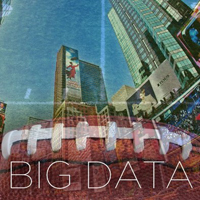 It’s almost time for the big game — the one and only Super Bowl.
It’s almost time for the big game — the one and only Super Bowl.
As diehard and casual fans alike pick up the snacks and set-up the living room for their Super Bowl parties, sports experts are spending hours on end pontificating on the minutiae of the tiniest details happening on and off the field, all in an effort to predict the winner between the Seattle Seahawks and the New England Patriots.
Meanwhile, even those people who admit they don’t care about football will be anxiously awaiting Super Bowl Sunday, if not for the game, then for the commercials. This late January / early February tradition has been around for decades now, but we might just be on the verge of seeing a major disruption in how things are done.
The talk now, at least among certain circles, is slowly moving toward a topic not normally associated with the Super Bowl: Big Data.
And while most fans may not notice the difference, Big Data has the potential to change the Super Bowl experience.
One of the favorite pastimes in all sports, not just the NFL, is to predict the outcome of each contest. Most of this is done all in good fun, but some people look at the practice as serious business; and nothing represents the pinnacle of sports achievement quite like the Super Bowl. Read more…
The FTC Releases Report on Internet of Things
Excerpted from Lexology Report
 On January 27th, the Federal Trade Commission (FTC) announced the release of a report on the Internet of Things: Privacy and Security in a Connected World. The report describes the current state of the Internet of Things (IoT), analyzes the benefits and risks of its development, applies privacy principles to the IoT, and discusses whether legislation is needed to address this burgeoning area. The Report follows a workshop by the FTC on this topic in November 2013.
On January 27th, the Federal Trade Commission (FTC) announced the release of a report on the Internet of Things: Privacy and Security in a Connected World. The report describes the current state of the Internet of Things (IoT), analyzes the benefits and risks of its development, applies privacy principles to the IoT, and discusses whether legislation is needed to address this burgeoning area. The Report follows a workshop by the FTC on this topic in November 2013.
The first part of the report acknowledges the explosive growth of the IoT, noting how there will be 25 million Internet-connected devices by the end of 2015 and 50 million such devices by 2020. These devices range from cameras to home automation systems to bracelets.
Next, the Report discusses the benefits and risks from the IoT. The benefits highlight such developments as: insulin pumps and blood pressure cuffs that can track an individual’s vital signs and submit the data to health care providers; smart meters that help homeowners conserve energy; and connected cars that can diagnose problems with the vehicle.
The risks that accompany such connected devices include: an unauthorized person accessing and misusing personal information of the user of the connected device; a hacker infiltrating the network to which the device is connected and wrecking havoc; and safety risks to the individual use. Read more…
Report from CEO Marty Lafferty
 There’s no doubt that momentum is increasing in the advancement of the Internet of Things (IoT).
There’s no doubt that momentum is increasing in the advancement of the Internet of Things (IoT).
This week, we’re pleased to present the first installment of the DCIA’s IoT Marathon webcast recorded during the 2015 International CES; and for each of the next six weeks, we’ll launch a new episode of thematically connected video-segments to complete our industry update on this vital and important technology movement.
Today, I invite you to invest an hour-and-a-half of your time in viewing the initial section of our webcast entitled Smart Objects for Fitness & Healthcare.
Just click here to view the entire first episode; or click on the links that follow to screen individual segments:
Consumer Electronics Association (CEA) Chief Economist Shawn Dubravac introduces the DCIA’s IoT Marathon and the debut of his new book “Digital Destiny” in Welcome to an Industry Update on the Internet of Things.
Israel Deputy Economic Minister Oded Grinstein offers a Viewpoint from the Israel Economic Mission of ongoing IoT innovation in that country.
LV Sands Global CIIO Les Ottolenghi delineates the principal terminology for this first major section of the webcast in Defining Smart Objects for Fitness & Healthcare.
IBM Global Consumer Electronics Director Scott Burnett, IoT Industrial Sector Lead North America Tim Connell, and IoT Foundation Product Manager Neil Postlethwaite provide an overview of How IBM Enables Smart Objects for Fitness & Healthcare.
ICON Health & Fitness VP of Marketing Colleen Logan describes iFIT, The Life of Fitness — A Healthy Version of IoT.
Lynxfit CEO Noble Ackerson outlines how wellness can be achieved and maintained with a system using wearable devices in Lynxfit – Wellness through Wearable Devices.
Fitness instructor Jennifer Miller demonstrates how Fitnet enables an independent and effective approach to exercising in Fitnet – Your Trainer. Your Style, Your Schedule.
Altra Footwear National Sales Manager Brian Roberts unveils revolutionary new running shoes in Altra Halo Sensors Put a Coach in the Shoe.
TXCUBE CEO Vincent Baumier shows how a smart watch adds a whole new dimension to tennis in iSet Game, Set and Watch.
Xensr Founder & CEO David Troup displays breathtaking 3-D sports tracking solutions in Xensr – Extremely Connected Fitness.
GTX Corp. Chairman & CEO Patrick Bertagna explains why GPS SmartSoles make GTX Corp. – The Next Big Step in Wearable Technology.
Wistiki Co-Founder Bruno Lussato illustrates how Wistiki can solve one of life’s annoying nuisances in Wistiki – Tired of Losing Your Stuff?
HereO Chief Operating Officer Allon Gladstone offers peace of mind to parents of young children with a small but powerful IoT child-locating device in HereO Helps Keep Your Children Safe.
Aquatic Safety Concepts COO Paul Newcomb presents iSwimband – Revolutionary Drowning Detection.
Slow Control Founder & CEO Jacques Lepine debuts the Baby GLGL smart bottle holder, the newest of Slow Control Smart Utensils for Healthier Eating.
Freescale Semiconductor Marketing & Technical Strategy leader John McLellan points out several fitness, health, and safety solutions powered by Freescale in Freescale Fitness Healthcare & Safety Start at Home.
YF Technology Company Sales Director Deisler Song previews lightweight smart bands and watches in YF Tech Wearables for a New Generation.
Techknowledge Strategies Principal Analyst Mike Feibus provides insights into relevant IoT advancements in Techknowledge Strategies – Fitness & Healthcare.
Umoove’s Marketing & Customer Development leader Jack Gottesman previews a powerful eyetracking technology and discusses its medical applications in Umoove Eyetracking Powered by You.
Vest VP Sales & Marketing Chen Raizman demos three Vest products that protect people from radiation in Vest – We Block Radiation.
Link Founder & Software Architect Luke Malpass shows how data storage can be portable, wearable, and simple to use in Link – Making Storage Wearable.
Yosef Levine, a Deloitte & Touche Director, offers his personal views on the future value of the IoT in Deloitte & Touche – IoT to Improve Fitness, Increase Transparency.
And finally, DigiCert VP of Government & Educational Relations and Senior PKI Architect Scott Rea leads a call for proven security measures to be employed from the outset with sensitive healthcare data in DigiCert – Protecting Healthcare Data in the IoT.
Next week, we’ll bring you a brand new flight of video segments in the next major section of our webcast entitled “Programmable Homes & Energy Management.” Share wisely, and take care.
Gartner’s Internet of Things Predictions
Excerpted from Information Age Report by Ben Rossi
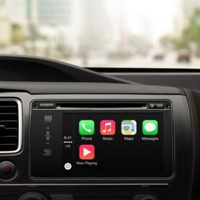 By 2020, there will be a quarter billion connected vehicles on the road, enabling new in-vehicle services and automated driving capabilities, according to Gartner.
By 2020, there will be a quarter billion connected vehicles on the road, enabling new in-vehicle services and automated driving capabilities, according to Gartner.
During the next five years, the proportion of new vehicles equipped with this capability will increase dramatically, making connected cars a major element of the Internet of Things (IoT).
Here are Gartner’s other predictions regarding the IoT.
“The connected car is already a reality, and in-vehicle wireless connectivity is rapidly expanding from luxury models and premium brands, to high-volume midmarket models,” said James Hines, Research Director at Gartner. “The increased consumption and creation of digital content within the vehicle will drive the need for more sophisticated infotainment systems, creating opportunities for application processors, graphics accelerators, displays, and human-machine interface technologies.
“At the same time, new concepts of mobility and vehicle usage will lead to new business models and expansion of alternatives to car ownership, especially in urban environments.”
Gartner forecasts that about one-in-five vehicles on the road worldwide will have some form of wireless network connection by 2020. Read more…
Telefonica Extends its US Capacity Network
Excerpted from Sys-Con Media Report
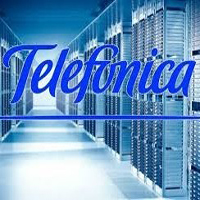 Telefonica Global Solutions, a leading provider of integrated communication solutions, together with Allied Fiber, the United States’ first open access, integrated, network-neutral colocation and dark fiber superstructure, have signed a 20-year agreement for dark fiber in the United States, as well as neutral colocation and interconnection services which will strengthen Telefonica’s international infrastructures in America.
Telefonica Global Solutions, a leading provider of integrated communication solutions, together with Allied Fiber, the United States’ first open access, integrated, network-neutral colocation and dark fiber superstructure, have signed a 20-year agreement for dark fiber in the United States, as well as neutral colocation and interconnection services which will strengthen Telefonica’s international infrastructures in America.
The following agreement provides Telefonica with dedicated access and use of its own physical network infrastructure within the Allied Fiber system enabling greater control of service provisioning, network scalability and costs.
The Allied Fiber Southeast segment covers more than 360 miles throughout the State of Florida and was built specifically to serve network operators of all types including, national, regional and metro carriers, as well as submarine cable networks.
Telefonica is present in America throughout its state of the art submarine cable Sam-1 connecting USA and Latin America and its brand new PCCS cable system that covers 3,700 miles and allows Telefonica to diversify the access points to the USA, increase the connectivity with Colombia, Ecuador, and Central America; and offer a better service to its MNC’s and Wholesale customers in terms of capacity, security and network diversity.
“With this infrastructure, Telefonica will increase reliability and diversity through its global network.” Read more…
The Human Impact of the Industrial Internet of Things
Excerpted from TechCrunch Report by Bruno Berthon
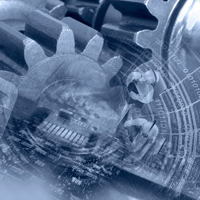 Will digital technology be positive for workers and jobs? Amid today’s public debate about the consequences of artificial intelligence and advanced robotics, along comes the industrial Internet of things (IIoT). Little understood but potentially very significant for multiple industry sectors, this next wave of technology will create more jobs than it will destroy, according to the majority of business leaders Accenture has surveyed.
Will digital technology be positive for workers and jobs? Amid today’s public debate about the consequences of artificial intelligence and advanced robotics, along comes the industrial Internet of things (IIoT). Little understood but potentially very significant for multiple industry sectors, this next wave of technology will create more jobs than it will destroy, according to the majority of business leaders Accenture has surveyed.
The IIoT is a fast-growing network of intelligent connected devices, machines, and objects. It will certainly automate and drive efficiencies, but the optimism of employers reflects their recognition that, more importantly, it will enable the creation of entirely new products and services and markets. Indeed, Accenture Strategy estimates the IIoT could boost the gross domestic product (GDP) of 20 of the world’s largest economies by an additional $14 trillion by 2030.
Where some technology advances have simply improved the quality and price competitiveness of products — mainly through automation — the IIoT breaks new ground in helping use vast volumes of data from those products and other physical objects to offer tailored outcomes to customers.
Take the example of the agrochemical sector. By integrating climatic, geological and other data, companies can go beyond selling products to earning revenues from guaranteed yields for specific crops in certain locations. Read more…
IoT to Dramatically Transform Business in 2015
Excerpted from Business Wire Report
 IDC Manufacturing Insights asserts that the Internet of Things (IoT) is on track to dramatically transform manufacturers’ products, services, and operations in 2015. While the hype persists around IoT, IDC Manufacturing Insight notes there are many signs that show confidence in IoT is with good reason.
IDC Manufacturing Insights asserts that the Internet of Things (IoT) is on track to dramatically transform manufacturers’ products, services, and operations in 2015. While the hype persists around IoT, IDC Manufacturing Insight notes there are many signs that show confidence in IoT is with good reason.
The new report, Perspective: The Internet of Things Gains Momentum in Manufacturing in 2015, details the primary applications of IoT in manufacturing as well as manufacturers’ current expectations, investment plans, and concerns.
“As IoT provides the basis for an increasing amount of automated data acquisition, manufacturers will be able to adapt their processes and their products not just for incremental improvements but also for more transformative purposes, including self-healing or autonomous processes and capabilities that evolve into new business models.”
According to IDC Manufacturing Insights, although there are many use cases for manufacturers, IoT applications essentially boil down to two — for processes and products:
Support the process: By 2020 at least half of all corporate stand processes will have automated data acquisition; a quarter will have self-correction capabilities. Read more…
BitTorrent Tests Websites Hosted in the Crowd
Excerpted from MIT Technology Review by Tom Simonite
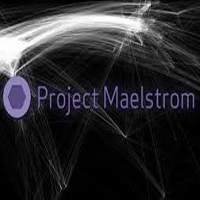 Websites distributing crucial information are vulnerable to going dark during disasters and denial-of-service attacks.
Websites distributing crucial information are vulnerable to going dark during disasters and denial-of-service attacks.
An experimental new web browser makes it possible for sites to be hosted not on a company’s servers but, instead, by a shifting crowd of individuals on their personal computers. That turns the usual approach to serving up websites on its head and could provide a more effective and reliable way to disseminate bulky media files or distribute vital information in the event of natural disaster.
The new approach is being tested by BitTorrent, the company behind the file-sharing protocol of the same name. It has developed a modified version of Chromium, the open-source version of Google’s Chrome browser. The effort is known as Project Maelstrom.
The Maelstrom browser can access conventional websites. But it can also be used to publish and browse websites that don’t reside on any particular server, known as torrent Web pages. To access a site published in that way, the browser grabs the data from the browsers of people who are already viewing it or have visited the site recently.
This peer-to-peer (P2P) method makes it possible to deal very efficiently with large crowds and provides resistance against denial-of-service attacks that shut down sites by bombarding them with traffic, says Rob Velasquez, a Product Manager at BitTorrent. Read more…
IoT Market to reach $103.6 Billion Worldwide by 2018
Excerpted from Military Aerospace Report by John Keller
 Global sales from the Internet of Things (IoT) portion of electronic systems will grow from $57.7 billion this year to $103.6 billion in 2018, which represents a compound annual growth rate (CAGR) of 21 percent in the five years between 2013 and 2018, industry analysts say.
Global sales from the Internet of Things (IoT) portion of electronic systems will grow from $57.7 billion this year to $103.6 billion in 2018, which represents a compound annual growth rate (CAGR) of 21 percent in the five years between 2013 and 2018, industry analysts say.
Worldwide sales from IoT functions for Internet communications and sensor subsystems totaled $48.3 billion last year, and will grow 19 percent in 2015 to $57.7 billion, predict analysts at market researcher IC Insights in Scottsdale, AZ.
By 2018, the market value of IoT subsystems in equipment and Internet-connected things should reach $103.6 billion worldwide, IC Insights analysts say in the company’s 2015 edition of IC Market Drivers — A Study of Emerging and Major End-Use Applications Fueling Demand for Integrated Circuits.
IoT functionality designed into equipment and web-enabled objects will become a pivotal factor in the sale of nearly half of all end-use systems by the end of this decade as connections to the Internet of Things becomes more common and expected by consumers and businesses, analysts say.
Since 2006 there have been more embedded systems, industrial equipment, sensor devices, instruments, meters, cameras, animals, and other objects connected to the Internet than humans using computers, smart phones, and other electronics for information technology, IC Insights experts say. Read more…
How the Internet of Things Will Change Your Life
Excerpted from the Motley Fool Report by Chris Neiger
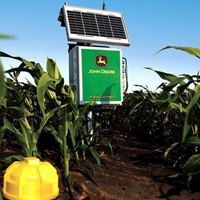 You think you know the Internet pretty well, right? You go online every day, maybe watch some videos on your phone, upload some pictures to Instagram, and message your friends and family.
You think you know the Internet pretty well, right? You go online every day, maybe watch some videos on your phone, upload some pictures to Instagram, and message your friends and family.
That’s a good start, but it’s a just a fraction of the Internet’s influence over your life.
Over the next few years, and even now, the Internet is connecting parts of our lives in ways we never could have imagined just a few years ago. It’s called the Internet of Things (IoT) — weird name, I know — and it’s going to transform the next 10 years of our technological lives.
How, you might ask?
Let’s start with a few really important topics: your food, your transportation, and your health.
A company called TempuTech is using IoT software created by General Electric and pairing it with sensors to monitor grain processing in silos. Farmers get real-time notifications of potential issues — like overheating — on conveyor belts and grain elevators before they become major problems.
When it comes to pest control, some orchards are turning to Internet-connected tree sensors and cameras to remotely release insect pheromones when growers notice insect populations getting too big. Read more…
One-in-Five Developers Target the IoT for Upcoming Projects
Excerpted from Developer Tech Report By Ryan Daws
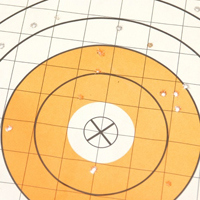 We have entered a new era where all of our devices going forward are expected to have a presence on the Internet and be able to relay data to us and one another to become more efficient, effective, and make our lives easier as we go about our day-to-day business.
We have entered a new era where all of our devices going forward are expected to have a presence on the Internet and be able to relay data to us and one another to become more efficient, effective, and make our lives easier as we go about our day-to-day business.
For this to happen, the world needs developers to create the experiences which help to tie all of these devices together. According to new research from Evans Data, one in five developers are in-fact now targeting the Internet of Things for their upcoming projects.
It just goes to show what a huge industry it is set to be, and everyone wants to secure their slice of the pie at the earliest point possible. Further research from Evans Data shows that connected device development overall grew an astounding 190% in 2014.
One-in-five developers are in-fact now targeting the Internet of Things (IoT).
Development for connected devices appear to be eating away at tablet development, which is beginning to wane and device sales slumping as Apple’s financial results showed this week. It’s quite interesting, as many would expect a tablet device to be the perfect “hub” for IoT applications. Read more…
ARM CEO Sets Sights on Servers & Internet of Things
Excerpted from Mercury News Report by Troy Wolverton
 Just about everyone knows about PCs that have Intel inside. But you may actually own more devices now that have ARM inside.
Just about everyone knows about PCs that have Intel inside. But you may actually own more devices now that have ARM inside.
And if you don’t, there’s a good chance you soon will.
ARM’s made a name for itself by designing chips that emphasize power efficiency. Unlike Intel, it doesn’t manufacture chips but licenses its designs to other companies, which can customize them for their needs.
Those qualities have made the Cambridge, UK company’s chips a hit in smartphones and tablets. CEO Simon Segars, who works out of ARM’s office in north San Jose, CA is betting the same advantages will give the company a leg up in new markets, including servers and the Internet of Things (IoT).
Segars spoke with this newspaper last month about smartphones, tablets, and the new markets for ARM’s chips.
Q: In terms of how the computing market is developing, what stands out for you about last year?
A: There’s a big trend around innovation. Previously if you wanted to build something, you needed a lot of scale. And now you’ve got low-cost electronic development platforms. You can get an ARM processor on a board for 20 bucks and plug it into your computer and get free software tools. Read more…
Google Chairman: “The Internet Will Disappear”
Excerpted from Business Insider Report by Dave Smith
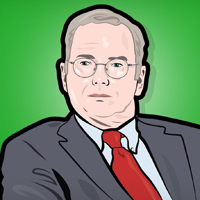 Google’s Chairman and ex-CEO Eric Schmidt was asked about the future of the web during a panel at the World Economic Forum in Davos, Switzerland.
Google’s Chairman and ex-CEO Eric Schmidt was asked about the future of the web during a panel at the World Economic Forum in Davos, Switzerland.
“I will answer very simply that the Internet will disappear,” Schmidt replied.
“There will be so many IP addresses … so many devices, sensors, things that you are wearing, things that you are interacting with that you won’t even sense it. It will be part of your presence all the time. Imagine you walk into a room, and the room is dynamic. And with your permission and all of that, you are interacting with the things going on in the room.”
Schmidt is referring to the so-called “Internet of Things (IoT),” in which Internet-enabled devices from phones to watches to thermostats and lightbulbs are increasingly programmed to be able to work on their own, for efficiency’s sake. Schmidt believes our interactions with these devices will eventually be totally seamless.
During the panel, called “The Future of the Digital Economy.” Schmidt also discussed Google’s dominance in the search market, and the increased competition in the smartphone business, declaring “all bets are off” due to the new players in the market. Schmidt was joined on stage by Facebook COO Sheryl Sandberg, Microsoft CEO Satya Nadella, and Vodafone CEO Vittorio Colao. Read more…
Samsung’s $100 Million IoT Bet Is Even Crazier Than You Think
Excerpted from Fast Company Report by Jared Newman
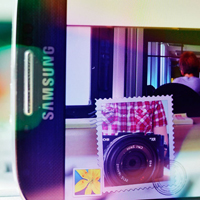 When you think of impossible dreams, Samsung probably doesn’t come to mind.
When you think of impossible dreams, Samsung probably doesn’t come to mind.
While the South Korean tech giant is a capable creator of mobile devices, computing components, TVs, and household appliances, it tends to be more of a fast follower than a visionary.
It sometimes leans too heavily on gimmicks, or takes too much inspiration from Apple — with an occasional exception — and is still figuring out how to make a killer smartwatch despite six attempts in the last 18 months.
But let’s give credit where it’s due. Samsung has some big ideas about the Internet of Things (IoT) — the concept that everything from your lights to your car to your coffeemaker could gain some intelligence through an Internet connection.
At CES, Samsung declared that it wants an entirely open ecosystem for these devices, so the door locks, garage door openers, and light bulbs of the future will all speak the same language. For startups that want to help build this ecosystem, Samsung co-CEO BK Yoon even pledged a funding pool of more than $100 million.
Taking a vow of openness isn’t too remarkable on its own — that’s how Google got its foot in the mobile door with Android, after all — but we’re talking about a market with hundreds of devices, very few of which are under Samsung’s control. Read more…
What Does Big Data Mean for the Internet of Things?
Excerpted from ClickZ Report by Mike O’Brien
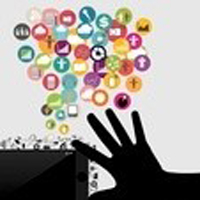 As the Internet of Things (IoT) grows, so does the amount of data that comes with it. Is there too much data? Absolutely not, say industry experts who believe marketers can utilize all of it.
As the Internet of Things (IoT) grows, so does the amount of data that comes with it. Is there too much data? Absolutely not, say industry experts who believe marketers can utilize all of it.
The Internet of Things (IoT) continues to evolve as more people use more wearable and connected devices. As a result, the availability of data is exponential. How can marketers wade through all of that information to find what’s actually valuable?
It all has potential value, according to Joe Burridge, a data science and big data recruitment consultant at UK digital recruiter Salt. The more information there is available, the clearer the picture that can be painted. For example, a consumer’s purchase history on a supermarket loyalty card, how often their gym membership is used, and family histories of diseases can give a more accurate portrayal of their health than the data from a fitness tracker alone.
But from a marketer’s perspective, one connected device in isolation can still give them plenty to work with.
“They’ll know the type of music you listen to, how fast you drive, whereabouts you live, your typical route to work,” Burridge says. “They know what kind of car you drive – if you drive a people-carrier, they’ll know you probably have children. They can create a pretty accurate profile of your interests.” Read more…
Coming Events of Interest
Datacloud South East Asia — April 1st-2nd in Johor, Malaysia. Datacloud South East Asia will assess the energy, scalability, security, architecture, and software challenges confronting operators of data centers and enterprises engaged in or considering transitions to the cloud.
NAB Show — April 11th-16th in Las Vegas, NV. Popular and fresh attractions for 2015 include the Cloud Pavilion (CP) for asset management; Connected Media Live (CML), focusing on the consumer experience; the Drone Pavilion (DP), featuring a fully enclosed “flying cage” for demonstrations; and the New Media Expo (NMX).
Internet of Things Conference — April 15th-17th in San Diego, CA. The IoT Con will focus on how companies are using a variety of technologies, including ZigBee radios, Wi-Fi, and machine-to-machine (M2M)software, to connect things to the Internet, and how they are achieving real business benefits from doing so.
All That Matters — May 20th-23rd in Singapore. Packed with influencers, content creators, platforms and marketers, ATM drives business and global collaboration for decision makers in the entertainment, media, and marketing industries.
CES Asia — May 25th-27th in Shanghai, China. The success of the 2015 International CES builds strong momentum for CES Asia. With strong exhibitor demand for CEA’s inaugural event, the show will be curated with select qualifying companies permitted to exhibit.
Data Center and Cloud Awards — June 2nd in Monaco. Europe’s most prestigious awards for data center and cloud achievements will be announced at an evening ceremony prior to the opening of Europe’s ‘must-attend’ Datacloud Europe conference and exhibition.
Internet of Things World Forum (IoTWF) — October (2015 Dates TBD) in Dubai, UAE. IoTWF is an exclusive event that brings together the best and brightest thinkers, practitioners, and innovators from business, government, and academia to accelerate the market adoption of the Internet of Things.
